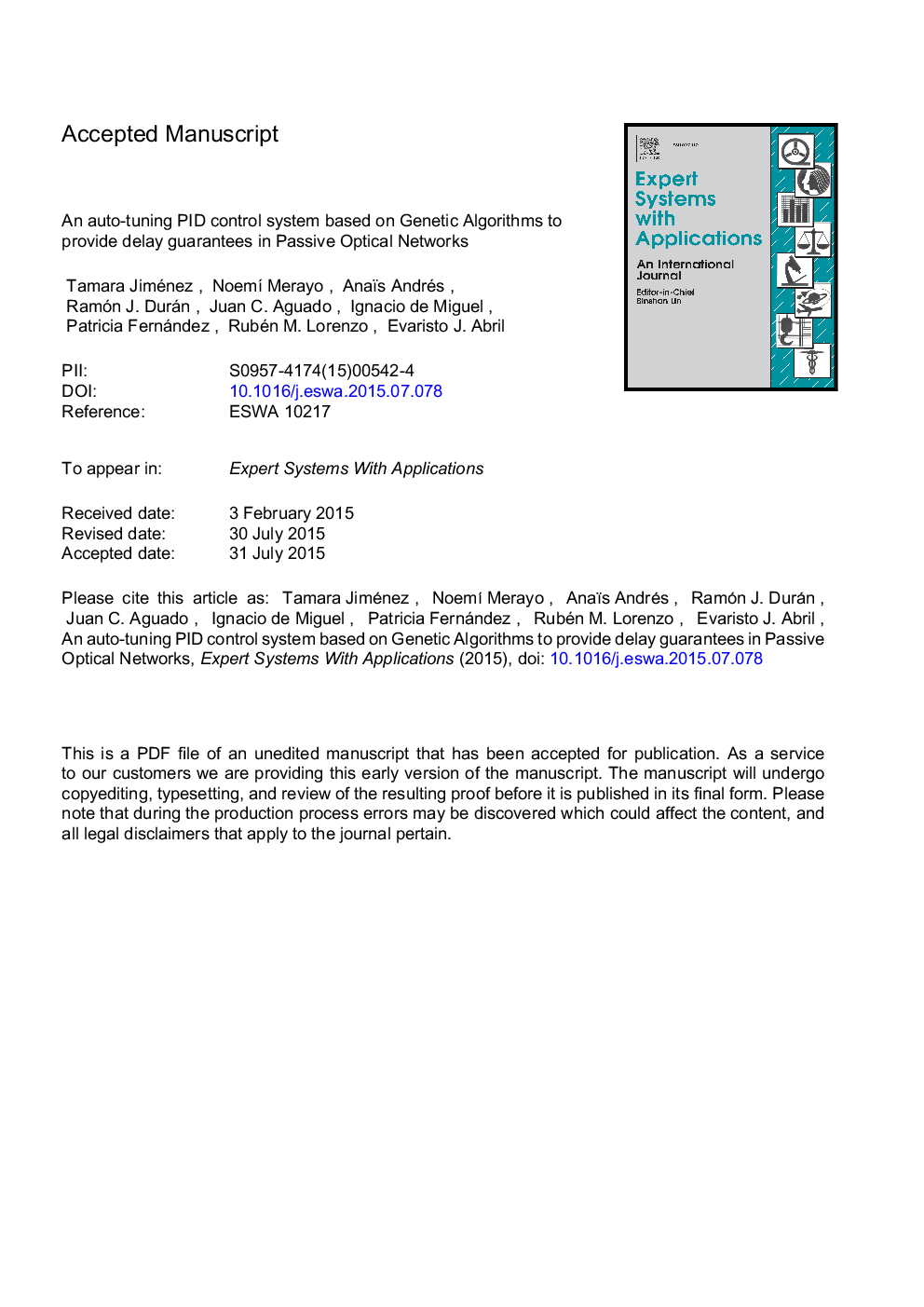| کد مقاله | کد نشریه | سال انتشار | مقاله انگلیسی | نسخه تمام متن |
|---|---|---|---|---|
| 10322159 | 660845 | 2015 | 16 صفحه PDF | دانلود رایگان |
عنوان انگلیسی مقاله ISI
An auto-tuning PID control system based on genetic algorithms to provide delay guarantees in Passive Optical Networks
دانلود مقاله + سفارش ترجمه
دانلود مقاله ISI انگلیسی
رایگان برای ایرانیان
کلمات کلیدی
موضوعات مرتبط
مهندسی و علوم پایه
مهندسی کامپیوتر
هوش مصنوعی
پیش نمایش صفحه اول مقاله

چکیده انگلیسی
Passive Optical Networks (PONs) are the most important access architectures since their deployment is massive all around the world. However, the QoS (Quality of Service) and the efficient management of the network resources have become the key point, especially with the new emerging services and applications. In particular, the delay and the bandwidth are becoming important limiting factors for the user experience. As a consequence, in a previous research we proposed the implementation of PID (Proportional-Integral-Derivative) control strategies to manage these networks parameters in PONs, demonstrating higher efficiency and more robustness than other previous existing algorithms. It is worth emphasizing that this is the first time to apply this control strategy in PONs access networks. However, in this paper we improve the PID control strategy by automating the tuning process with a genetic algorithm. Indeed, we have developed a novel automatic tuning technique based on genetic algorithms to tune a P controller that provides delay guarantees. Simulation results show that the control strategy reduces the tuning time up to 64% in comparison with the Ziegler-Nichols manual technique (ZN). On the other hand, it is demonstrated that our proposal is more accurate and robust that ZN since the genetic algorithm automatically evolves to the best solutions of the tuning parameters in contrast to the manual experiments required for the ZN method. Furthermore, we have complemented the use of the P controller with a new dynamic Admission Control (AC) module. This module implements a policy to selectively transmit or drop packets and leads a better delay control. The simulation analysis reveals that the real time evolution of the delay with the dynamic AC is more stable when compare to a conventional and simple fixed AC, reaching differences near one order of magnitude in the delay fluctuations.
ناشر
Database: Elsevier - ScienceDirect (ساینس دایرکت)
Journal: Expert Systems with Applications - Volume 42, Issue 23, 15 December 2015, Pages 9211-9220
Journal: Expert Systems with Applications - Volume 42, Issue 23, 15 December 2015, Pages 9211-9220
نویسندگان
Tamara Jiménez, Noemà Merayo, Anaïs Andrés, Ramón J. Durán, Juan C. Aguado, Ignacio de Miguel, Patricia Fernández, Rubén M. Lorenzo, Evaristo J. Abril,